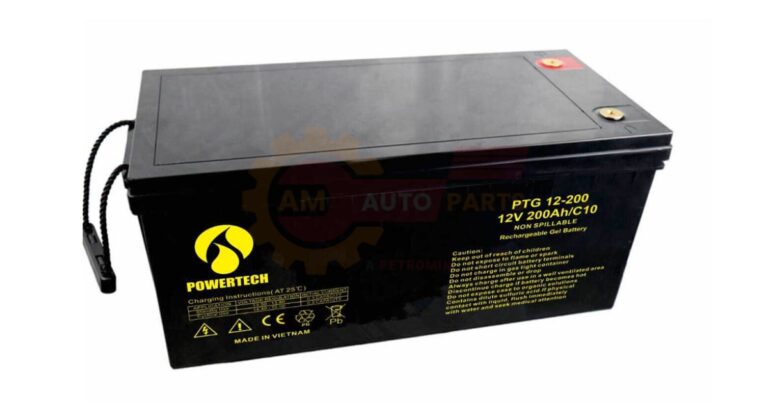Understanding Car Battery Group Sizes and Sizes
Car batteries are essential components that power your vehicle’s electrical systems. Understanding car battery group sizes and sizes is crucial for ensuring compatibility and optimal performance. This guide will delve into the intricacies of car battery sizes, helping you make informed decisions.
What are Car Battery Sizes?
Car battery group sizes refer to the standardized dimensions and specifications of batteries, ensuring they fit specific vehicles. Car battery sizes, on the other hand, encompass the physical dimensions, terminal locations, and power ratings of the battery. These factors are vital for ensuring the battery fits and functions correctly in your vehicle.
Battery Group Sizes
Battery group sizes are defined by the Battery Council International (BCI) standards. These sizes categorize batteries based on their physical dimensions, terminal locations, and power specifications. The BCI group size system ensures that batteries are compatible with specific vehicle models, making it easier for consumers to find the right fit.
Importance of Battery Sizes in Vehicle Compatibility
The importance of battery sizes in vehicle compatibility cannot be overstated. A battery that is too large or too small can lead to installation issues, poor performance, and even damage to the vehicle’s electrical system. Ensuring the correct battery size is crucial for maintaining the vehicle’s reliability and efficiency.
- Correct battery size ensures proper fit and function.
- Prevents potential damage to the vehicle’s electrical system.
- Enhances overall vehicle performance and reliability.
BCI Group Size System Explained
The BCI group size system is a standardized method for categorizing car batteries. It provides a framework for understanding the various dimensions and specifications of batteries, ensuring compatibility with different vehicle models.
Battery Council International (BCI) Standards
The Battery Council International (BCI) sets the standards for battery group sizes. These standards are widely recognized and used by manufacturers to ensure that batteries meet specific criteria for size, power, and terminal placement. BCI standards simplify the process of selecting the right battery for your vehicle.
How BCI Group Sizes are Determined
BCI group sizes are determined based on several factors, including the battery’s physical dimensions, terminal locations, and power ratings. These factors are crucial for ensuring that the battery fits and functions correctly in the designated vehicle model.
- Physical dimensions: Length, width, and height of the battery.
- Terminal locations: Positioning of the positive and negative terminals.
- Power ratings: Cold Cranking Amps (CCA) and Reserve Capacity (RC).
Common Car Battery Sizes and Their Applications
Understanding common car battery sizes and their applications can help you choose the right battery for your vehicle. Different vehicles require different battery sizes based on their electrical demands and physical space constraints.
Top-Selling Battery Group Sizes
Top-selling battery group sizes include 24, 35, 48, and 65. These sizes are popular due to their compatibility with a wide range of vehicles, from compact cars to larger SUVs and trucks. Each size offers specific benefits in terms of power output and fit.
Vehicle-Specific Battery Size Requirements
Vehicle-specific battery size requirements are determined by the manufacturer’s specifications. These requirements ensure that the battery provides adequate power and fits securely within the vehicle’s battery compartment.
- Compact cars: Typically use smaller group sizes like 24 or 35.
- SUVs and trucks: Often require larger group sizes like 48 or 65.
- High-performance vehicles: May need specialized batteries with higher power ratings.
How to Find Your Car’s Battery Group Size
Finding your car’s battery group size is essential for selecting the right replacement battery. There are several methods to determine the correct size for your vehicle.
Checking the Owner’s Manual
The owner’s manual is a reliable source for finding your car’s battery group size. It provides detailed information about the recommended battery specifications, ensuring compatibility and optimal performance.
Using Online Battery Lookup Tools
Online battery lookup tools are convenient resources for finding your car’s battery group size. These tools allow you to input your vehicle’s make, model, and year to receive accurate battery recommendations.
- Owner’s manual: Check for battery specifications and recommendations.
- Online tools: Input vehicle details for battery size suggestions.
- Manufacturer’s website: Often provides battery compatibility information.
Factors Affecting Battery Size Selection
Several factors affect battery size selection, including physical dimensions, Cold Cranking Amps (CCA), and Reserve Capacity (RC). Understanding these factors can help you choose the right battery for your vehicle.
Physical Dimensions
Physical dimensions are a critical factor in battery size selection. The battery must fit securely within the vehicle’s battery compartment to ensure proper installation and function.
Cold Cranking Amps (CCA)
Cold Cranking Amps (CCA) measure the battery’s ability to start an engine in cold temperatures. A higher CCA rating indicates better performance in cold weather, making it an important consideration for battery selection.
Reserve Capacity (RC)
Reserve Capacity (RC) indicates the battery’s ability to power the vehicle’s electrical systems in the event of an alternator failure. A higher RC rating provides more extended power availability, enhancing reliability.
- Physical dimensions: Ensure proper fit within the battery compartment.
- CCA: Higher ratings offer better cold-weather performance.
- RC: Longer reserve capacity enhances reliability.
What Happens if I Use the Wrong Size Car Battery?
Using the wrong size car battery can lead to several issues. The battery may not fit properly, leading to installation difficulties and potential damage to the vehicle’s electrical system. Additionally, an incorrect battery size may not provide adequate power, resulting in poor performance and reduced reliability.
Types of Car Battery Terminals and Their Impact on Size
Car battery terminals play a crucial role in determining the battery’s compatibility with your vehicle. Different terminal types can impact the battery’s size and fit.
Top Post Batteries
Top post batteries feature terminals on the top of the battery. This design is common in many vehicles and provides easy access for installation and maintenance.
Side Post Batteries
Side post batteries have terminals located on the side of the battery. This design is often used in specific vehicle models and requires careful consideration of terminal placement during installation.
Dual Terminal Batteries
Dual terminal batteries offer both top and side terminals, providing versatility and compatibility with a wider range of vehicles. This design allows for flexible installation options.
- Top post: Terminals on top for easy access.
- Side post: Terminals on the side for specific vehicle models.
- Dual terminal: Versatile design for broader compatibility.
Measuring Battery Power: CCA, CA, and RC
Understanding battery power measurements like Cold Cranking Amps (CCA), Cranking Amps (CA), and Reserve Capacity (RC) is crucial for selecting the right battery.
Understanding Cold Cranking Amps (CCA)
Cold Cranking Amps (CCA) measure the battery’s ability to start an engine in cold temperatures. A higher CCA rating indicates better performance in cold weather, making it an important consideration for battery selection.
Cranking Amps (CA) Explained
Cranking Amps (CA) measure the battery’s ability to start an engine at normal temperatures. While similar to CCA, CA is measured at a higher temperature, providing a different perspective on the battery’s starting power.
Reserve Capacity (RC) and Its Importance
Reserve Capacity (RC) indicates the battery’s ability to power the vehicle’s electrical systems in the event of an alternator failure. A higher RC rating provides more extended power availability, enhancing reliability.
- CCA: Higher ratings offer better cold-weather performance.
- CA: Measures starting power at normal temperatures.
- RC: Longer reserve capacity enhances reliability.
The Relationship Between Battery Size and Performance
Battery size and performance are closely related. The right size ensures adequate power output and longevity, while an incorrect size can lead to performance issues and reduced lifespan.
Size vs. Power Output
The size of the battery directly impacts its power output. A larger battery typically provides more power, making it suitable for vehicles with higher electrical demands.
Size vs. Lifespan
Battery size also affects its lifespan. A correctly sized battery is more likely to last longer, providing reliable performance over time.
- Size impacts power output and lifespan.
- Larger batteries offer more power for high-demand vehicles.
- Correct size ensures longer battery life and reliability.
Alternative Battery Sizes and Compatibility
Alternative battery sizes offer flexibility and compatibility with various vehicles. Understanding these options can help you find the right fit for your needs.
Universal Fit Batteries
Universal fit batteries are designed to work with a wide range of vehicles. These batteries offer versatility and convenience, making them a popular choice for many drivers.
Adapting Different Group Sizes
Adapting different group sizes involves using adapters or modifications to fit a non-standard battery into your vehicle. This approach requires careful consideration to ensure compatibility and safety.
- Universal fit: Versatile batteries for various vehicles.
- Adapting sizes: Use adapters for non-standard fits.
- Ensure compatibility and safety with modifications.
Battery Size Considerations for Different Vehicle Types
Different vehicle types have specific battery size considerations. Understanding these requirements can help you choose the right battery for your vehicle.
Passenger Cars
Passenger cars typically require smaller batteries with moderate power output. These vehicles benefit from compact batteries that fit easily within the engine compartment.
SUVs and Trucks
SUVs and trucks often require larger batteries with higher power ratings. These vehicles have greater electrical demands, necessitating robust batteries for optimal performance.
Motorcycles and Powersports Vehicles
Motorcycles and powersports vehicles require specialized batteries with unique size and power specifications. These batteries are designed to fit compact spaces and provide reliable power for smaller engines.
- Passenger cars: Smaller batteries for compact fit.
- SUVs and trucks: Larger batteries for higher power needs.
- Motorcycles: Specialized batteries for compact spaces.
The Impact of Climate on Battery Size Selection
Climate plays a significant role in battery size selection. Different weather conditions can affect battery performance, making it essential to choose the right size for your environment.
Cold Weather Considerations
In cold climates, batteries with higher Cold Cranking Amps (CCA) are essential. These batteries provide better starting power in low temperatures, ensuring reliable performance.
Hot Climate Battery Requirements
In hot climates, batteries with higher Reserve Capacity (RC) are beneficial. These batteries offer extended power availability, reducing the risk of overheating and failure.
- Cold weather: Higher CCA for reliable starting power.
- Hot climate: Higher RC for extended power availability.
- Choose the right battery size for your climate.
Maintenance Tips for Different Battery Sizes
Proper maintenance is crucial for ensuring the longevity and performance of your car battery. Different battery sizes may require specific maintenance practices.
Proper Installation Techniques
Proper installation techniques are essential for ensuring the battery fits securely and functions correctly. This includes checking terminal connections and securing the battery within the compartment.
Size-Specific Maintenance Practices
Size-specific maintenance practices involve regular checks and upkeep tailored to the battery’s size and specifications. This ensures optimal performance and extends the battery’s lifespan. Multimeter voltage measurement A multimeter can measure the electric pressure in a circuit telling us how much voltage is present when we connect its probes to different points Electrochemical energy storage is a way to keep power for later use It works by using special chemicals to store and release electricity
Battery replacement threshold is the point when a device’s battery becomes too weak and needs to be changed It helps users know when it’s time to get a new battery for their gadget Battery voltage range The
Charge depleted battery means your device has no power left You need to plug it in to recharge the Battery Issues Symptoms can include your device turning off suddenly or not holding a charge for very long
Car battery recommendations Choose a battery that fits your car’s size and power needs and replace it every 3 to 5 years to keep your vehicle running smoothly
- Proper installation: Secure fit and correct terminal connections.
- Regular checks: Tailored maintenance for specific battery sizes.
- Extend battery life with proper upkeep.
Future Trends in Car Battery Sizes and Technologies
The future of car battery sizes and technologies is evolving rapidly. Innovations in battery design and performance are shaping the automotive industry.
Compact High-Performance Batteries
Compact high-performance batteries are becoming increasingly popular. These batteries offer powerful performance in a smaller package, making them ideal for modern vehicles with limited space.
Electric Vehicle Battery Innovations
Electric vehicle battery innovations are driving the future of automotive technology. Advances in battery design and capacity are enhancing the range and efficiency of electric vehicles.
- Compact batteries: Powerful performance in a smaller package.
- Electric vehicles: Innovations in battery design and capacity.
- Shaping the future of automotive technology.10)
FAQ’s
What is a car battery group size, and why is it important?
A car battery group size is a standard sizing code that indicates the physical dimensions, terminal placement, and compatibility of a car battery with certain vehicle types. Group sizes are important because they ensure that the battery fits properly in the car’s battery tray and connects easily to the vehicle’s electrical system. Choosing the right group size helps prevent installation issues and ensures reliable performance.
How can I find the correct battery group size for my vehicle?
You can find your car’s recommended battery group size in the owner’s manual, on the current battery label, or by checking the specifications from the manufacturer. You can also ask for assistance at auto parts stores, where experts can look up the right group size based on your car’s make, model, and year.
Are there different group sizes for different types of vehicles?
Yes, different types of vehicles often require different battery group sizes. For example, compact cars, trucks, and SUVs all have different battery requirements due to variations in power needs and battery tray dimensions. Certain group sizes are more common for specific types of vehicles, so choosing the size that matches your vehicle type is crucial.
Can I use a battery with a different group size than the one recommended?
Using a battery with a different group size is generally not recommended. A battery that is too large or too small may not fit securely, and incorrect terminal placement can prevent proper connection to your vehicle’s electrical system. Using the correct group size is the safest way to ensure proper fit, function, and reliability.






